Since I bought my ’76 Honda Elsinore 250, a lot of things have happened. From the initial purchase to figuring out how to get (and keep) it running, to actually riding it around a dirt flat-track – I feel like I’ve done a lot to this bike in the few short weeks since I’ve acquired it. Really, the ultimate goal was to see if I could make this bike into something that I can take down to the Salem Flat Track races this winter, and I think I’ve got it pretty close to where I want it.
For this post, I’m going to detail everything I’ve done to the bike to get it ready for the season. I’m sure there will be changes between races as I try and gain as much knowledge and tips from other racers. My mantra with this project (and so many things in life) is admitting that I have no idea what I’m doing, but I’m doing it anyway. There are right ways to do things once you’ve started, but there is no wrong way to start. Bumble your way forward and fail big, but don’t fall victim to Analysis Paralysis — just do it and see what happens.
So here’s what I did, and you can follow along with the “what happens” part in future posts on Last Moto.
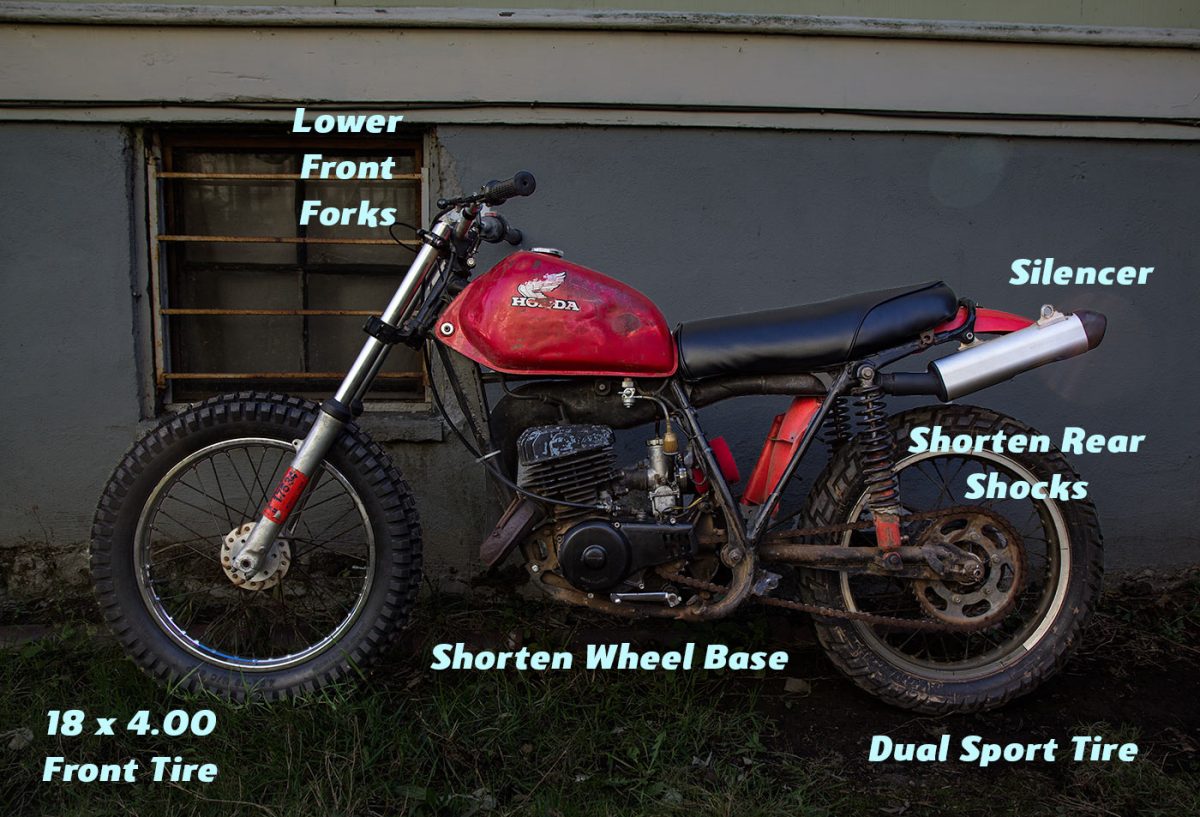
General Tune-Up
The bike had sit for 3 years when I purchased it, so the first thing I did was drain the old gas, clean the tank, put in a new spark plug, clean the air filter, and lube the cables and chain. Depending on your motorcycle, you may want to do a lot more replacing than repairing. This once-over sets the bike at a standard level that you can base all your future work on. Clean plug and fluids are the cheapest and most satisfying tune-ups you can do.
Front Fork Rebuild and Lowering The Front End
The front forks were completely blown out, and I really could feel it that first weekend on the track. I had ordered some new seals from my favorite online shop 4into1.com and after a solid evening of work, cleaning, and help from Casey at Cycle Heap – the forks were no longer leaking and ready to be reinstalled.
At their default height, the forks sat pretty high and made it difficult for me to get over the handlebars. I really felt like I was hanging on to the bike rather than having a more aggressive forward stance. Lowering the front shocks really helped that. Initially I had lowered them at least 2.5 – 3 inches, but since I haven’t yet found a set of lowered rear shocks, it made the bike lean too far forward and an awkward angle. I moved them back up about an inch which felt better. Once I shorten the rears I can match the fronts and give the entire bike a lower center of gravity.
Tires Changes
This bike came with some ancient knobby tires that had some life in them, but not for what I needed. I’m not racing the knobby class in Salem, and Otto’s flat track requested tires that wouldn’t tear the track up. I found a used 18 inch dual sport tire that would mount up to the rear wheel, and so far it’s felt pretty good. I mean… beats me… I’ve never raced with anything else. It breaks loose but doesn’t feel too slippery:
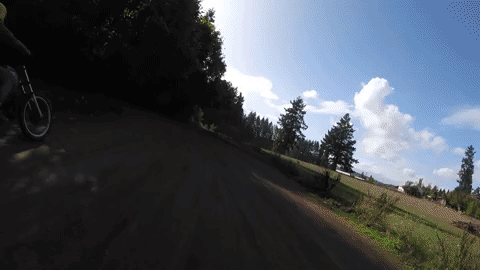
The front wheel was a stock 19 inch with a skinny knobby mounted on it. I loved the lightweight alloy rim, but the consensus at Otto’s track is that an 18 inch wheel with a wider tire would help the bike out a lot. Luckily I already had a wheel that would work – an 18″ steel wheel with a disc brake on it. I cleaned up the rim, removed the brake and headed down to Cycle Heap to machine some aluminum spacers for the front.
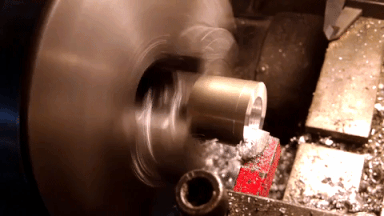
The tire is a Shinko SR-241 — cheap as chips but it doesn’t look it. The wider tire is a close fit between the two shocks, but we’ll see how it does at the track. I wasn’t able to race on this tire at Otto’s, so the true test will be down at Salem.
Anything will be better than the tire I was running, and if anything it certainly fits the part of a flat track bike.
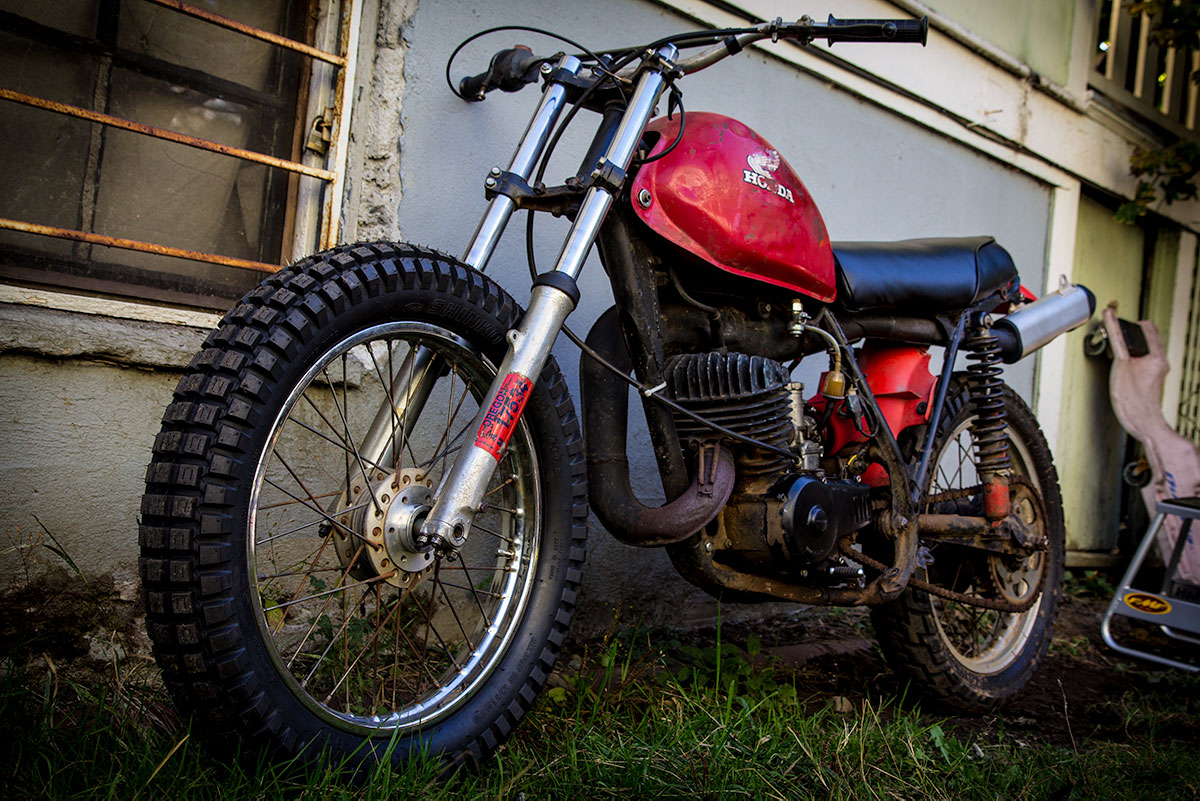
Quieting it Down
The bike had no muffler so the open pipes sounded loud and mean. I’m not a flashy guy and the bike actually got neighbor complaints the last time I raced it at Otto’s, so I was on the hunt for something to make it a little more low-key. I found a nice little FMF 2-stroke silencer but it had a much smaller inlet than the 1.75 inches that I needed. I took it down to a local muffler shop and had them weld me up an adapter. Looks decent and will do the trick – it still sounds like a 2 stroke but the loud cracking of open pipes won’t drill into the head of anyone who happens to be behind me in Salem. I get the feeling this won’t be too much of a problem.
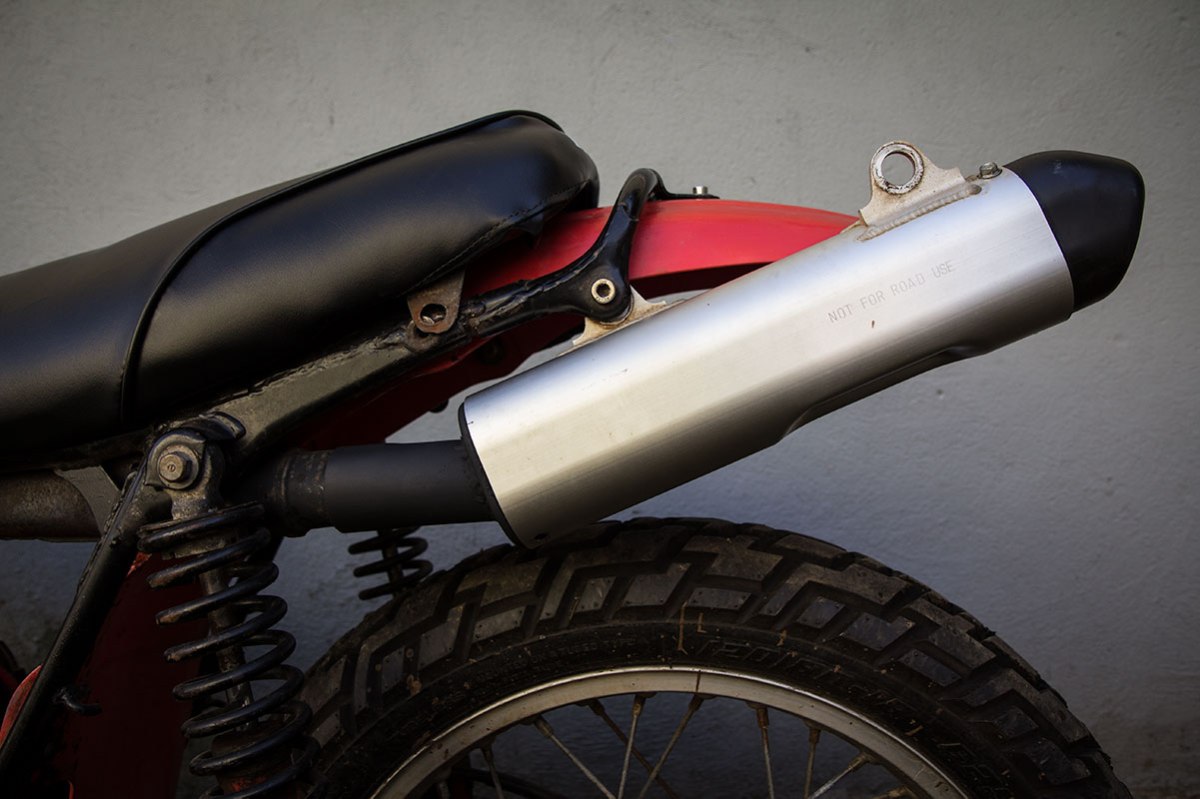
Fun Stuff
I removed the front brake (don’t need that on the track) and front fender, recovered the seat with a cheap reproduction from eBay, restored the sun damaged rear mud guard and fender (more on that in a future post), and replaced the bent up handlebars. Other than a tank with some real dents on the side, the bike looks miles better than it did when I got it.
I put a new two stage Uni filter on the rebuilt carb so it can breathe easy on the dirt track.
What’s Next?
The first practice on the Salem track is this Friday, so I’ll be putting the bike and myself through the paces. This will give me an idea of what else I need to do leading up the the first race on November 4th. Here’s what I know I need before that first rip off the starting line:
- Find shorter rear shocks
- Replace the chain and shorten the wheelbase as much as I can.
- Get number plates and mount them.
- Go fast, turn left.
My next update on this bike will be after practice – I’m looking forward to see what I learn on the track and how the bike performs. Thanks for reading and I hope you enjoy following along.
Am I doing this right? Wrong? Let me know in the comments or hit me up on Instagram.





Old flat track setup trick, front axle, rear axle, crank shaft, counter shaft, and swing arm pivot shoul all line up in a straight line
This is a great visual, Cliff! I gotta use this as I build my new flat tracker!
This is a great visual, Cliff. I’m going to look for this “straight line” on people’s flat track bikes from now on. Dd you use to race flat track?
yes in 70s, started on a Husky, switched to Yamaha/Trackmaster, Triumph/Trackmaster, Astro with a Suzuki, Honda XR 442 in a stock frame with the head angle cut back,